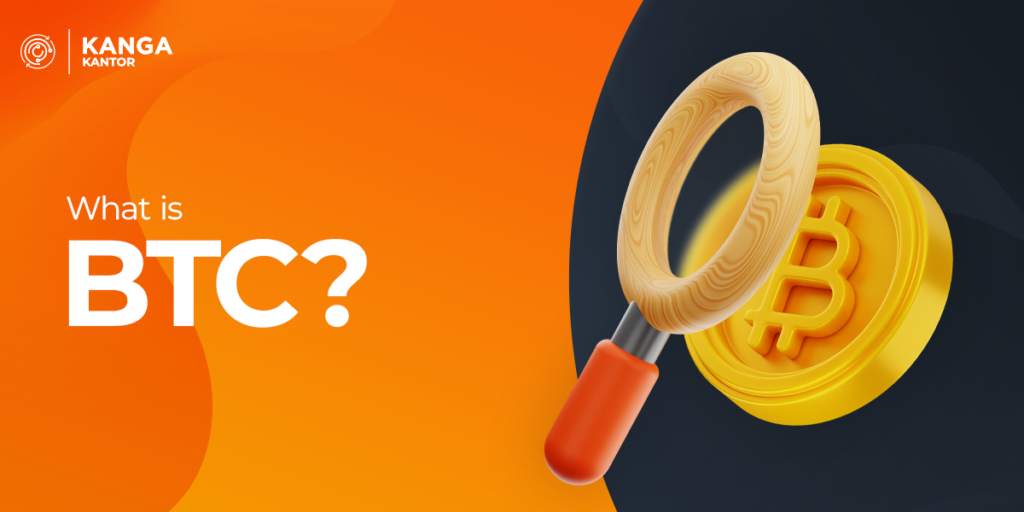What is BTC?

“What is bitcoin?”. Today it is increasingly difficult to meet a person who could not answer this question. But would that same person be able to answer “what” the world’s most popular cryptocurrency really is in a comprehensive way?
If not – no harm done! For we are starting a series called “What is…?”, in which we discuss the digital currencies available at Kanga Kantor outlets. At first glance goes, of course, BTC. We invite you to read it!
BTC – definition
Bitcoin (BTC) is a cryptocurrency, a virtual currency designed to act as money. It is a form of payment that is beyond the control of any single person, group or entity, thus removing the need for third parties to be involved in financial transactions. It was introduced to the public in 2009 by an anonymous developer or group of developers using the pseudonym Satoshi Nakamoto.
Since then, it has become the most well-known cryptocurrency in the world. Its popularity has inspired the development of many other cryptocurrencies. Its competitors are either trying to replace it as a payment system, or it is being used as utility or security tokens in other blockchain and emerging financial technologies.
How does blockchain technology work?
Cryptocurrencies are part of the blockchain and the network required to power it. A blockchain is a distributed ledger, a shared database that stores data. The data within the blockchain is secured by encryption methods.
When a transaction takes place on the blockchain, information from the previous block is copied into a new block with new data, encrypted, and the transaction is verified by validators called miners on the network. When the transaction is verified, a new block is opened, and bitcoin is created and given as a reward to the miner(s) who verified the data in the block – they are then free to use, hold or sell it.
Bitcoin uses the SHA-256 hash algorithm to encrypt data stored in blocks on the blockchain. Simply put, the transaction data is encrypted into a 256-bit hexadecimal number. This number contains all the transaction data and information associated with previous blocks.
Transactions are queued up for approval by miners in the network. All miners in the bitcoin network try to verify the same transaction at the same time. Software and “mining hardware” are working to resolve the nonce, a four-byte number contained in the block header.
How to mine bitcoin?
Various types of hardware and software can be used to mine bitcoin. When bitcoin was first released, it could be mined on a personal computer. However, as it became more popular, more miners joined the network, which lowered the chances of being the one to solve the hash. It is still possible to use a personal computer as a miner if it has newer hardware, but the chances of individually solving the hash are slim.
This is because there is competition in the form of a network of miners that generate about 220 quintillion hashes (220 exa hashes) per second. The machines, called Application Specific Integrated Circuits (ASICs), were built specifically for mining – they can generate about 255 trillion hashes per second. By comparison, a computer with the latest hardware generates about 100 mega hashes per second (100 million).
You can use your computer to successfully become a mining miner. You can use your existing personal computer to use Bitcoin-compatible mining software and join a mining pool. Mining pools are groups of miners who pool their computing power to compete with large ASIC mining farms.